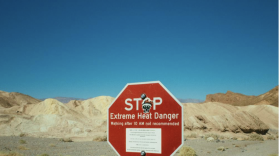-
On Thursday, health advocates told lawmakers that increasing extreme heat is impacting Indigenous people’s wellbeing and traditional ways of life.
-
16 communities in Southern New Mexico improved their water by creating one common utility. Now, they’re serving as a model for others in the state.
-
Even with money available it can be difficult to spend when expertise and workforce is in short supply
-
It requires constant work to keep up with applications for federal infrastructure dollars to flow to places like the small Northern N.M. town; some groups are starting outreach to connect people to money
-
Several towns will get water from Ute Reservoir, after many local leaders fought for funding; a long fight that can strain local communities
-
Millions of dollars are coming to New Mexico for water projects through the Infrastructure Investment and Jobs Act of 2022, but not everyone who needs it has the knowledge or time required to apply.The University of New Mexico announced it will receive $4 million to help underserved communities in the state navigate the process.
-
As residents of a small community on the Navajo Nation eagerly await construction of a 7-mile water pipeline from the Rio Grande, they imagine the luxuries of running water.
-
Construction will soon begin on a 7-mile pipeline that will deliver water from the Rio Grande to the small Navajo community of To’Hajiilee, where the water's so bad the local government trucks in bottled water for residents.
-
Acequias were created and maintained by Native Americans before the Spanish settlers arrived. Centuries later, acequias remain a common conveyance for water all around our state in the face of an unpredictable climate and constant water rights battles. On the next Let’s Talk New Mexico, we’ll highlight a new film showing how climate change is impacting the health of our acequias and agriculture, and, we'll check in with acequia users and legal experts. Should we be doing more to protect acequias?
-
Researchers are traversing Western mountains to better understand snow algae – and whether its blooms are hastening the melting of mountain snowpack.
Play Live Radio
Next Up:
0:00
0:00
Available On Air Stations










